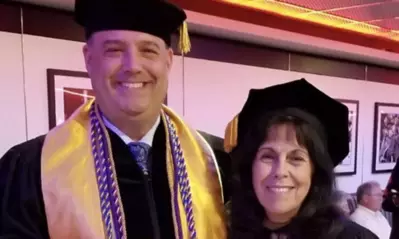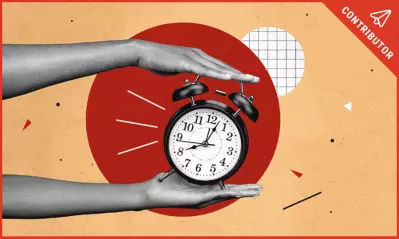How to find the truth in a sea of information

Written by¬ÝClaire O‚ÄôBrien

Information overload in a knowledge economy
Have you ever opened your email inbox on a Monday morning, seen the overflowing new messages, alerts and spam, and felt paralyzed by a sense of dread? You are not alone.
¬Ýof being unable to process information as fast as it arrives, along with the constant demand for our attention,¬Ýleads to exhaustion and burnout. Between the anxiety-inducing 24-hour news cycle and our phones dinging every 10 seconds with the latest social update, many of us are reeling from the effects of information overload.
¬Ýrefers to the strain on a system, whether our own nervous system or a company‚Äôs IT network, when it‚Äôs¬Ýtrying to handle too much information at once.¬ÝAnd in today‚Äôs fast-paced digital world, information has never been so accessible ‚Äî or so impossible ‚Äî to avoid.
While all that offers enough food for thought on its own, the bigger question is this:¬ÝHow do we filter¬Ýthe deluge of reports and information to separate the wheat from the chaff?
Fighting misinterpretation
Erik Bean, EdD, has a few ideas when it comes to understanding how people can discern a reliable source from an unreliable one. As a research fellow at the¬Ý∆þ…´ ”∆µ College of Doctoral Studies and a thought leader in cognitive biases, Bean studies this topic professionally and anecdotally.
His interest was complemented by imperative as he watched the media coverage of the COVID pandemic, the 2020 presidential election and the January 6 insurrection. Eventually, Bean felt compelled to create a resource so the public could more easily separate fact from fiction.
‚ÄúI wanted to come up with a short survey people could use to¬Ýassess their own personal biases, which can affect their ability to interact with information,‚Äù he explains. Bean‚Äôs work on cognitive biases and how to investigate information culminated in his award-winning book,¬Ý.

What are biases?
Cognitive biases are a result of your brain‚Äôs attempt to¬Ý. Basically, they‚Äôre¬Ýmental shortcuts¬Ýthat, in our efforts to cope with too much information, end up¬Ýdistorting our judgment.
There are many¬Ý¬Ýexamples, but a few you might already be familiar with include:
- Confirmation bias¬Ý‚Äî the tendency to absorb information that already closely aligns with our opinion
- Optimism bias¬Ý‚Äî we overestimate the likelihood of good things happening to us and minimize a potential negative outcome
Dependence on social media¬Ýas a news source can also be a source of bias. ‚ÄúMany individuals rely on social media as a news source. We need to take a step back and inspect the information with a more careful eye,‚Äù Bean advises. "In this day and age with TikTok and AI, people‚Äôs posts will be duplicated, information will be stolen, and information that we believe comes from a reliable source may not be so. We need to investigate who the author is.‚Äù
The 7 sources of bias
A key emphasis of Bean’s work is the importance of informational awareness despite being surrounded by constant bias.
There are many different biases in the world, including¬ÝÃ˝≤π≤‘ªÂÃ˝.
For his part, Bean focuses on information selection, and in his book, he identifies seven primary sources of bias:
- Academic: Schools, colleges and universities might introduce bias through pressure to publish or get specific results in their research.
- Hidden agenda (AI): This source of bias refers to an entity or individual that covertly promotes a goal.¬ÝSocial media companies, like TikTok and Facebook, are often accused of having hidden agendas when it comes to privacy issues.
- For profit: As businesses are motivated by profit, their goal often (unsurprisingly) is to influence people to buy their products.
- Nonprofit: Nonprofit organizations, such as churches, temples and community groups, might be motivated to present a one-sided view of issues to promote specific action regarding a certain cause.
- Watchdog groups: These groups exist to hold other groups accountable. Often, they are organized as nonprofits and might harbor any number of biases or hidden agendas.
- Government: From the local to federal levels, governments might exhibit bias through hidden agendas, propaganda or censorship.
- Individuals: Every individual has personal biases that subtly influence how they interpret and communicate information.
The antidote to bias
To help evaluate information for accuracy and objectivity, Bean developed the¬ÝKLEMP model, which is based on the¬Ýclassic principles of rhetorical argument. An acronym for Kairos, Logos, Ethos, Mythos and Pathos, KLEMP is a cognitive tool that allows us to analyze information in a structured way, so that we become aware of the presence of bias in the information we are consuming.

Theory into practice: A cognitive bias example
To put KLEMP into practice, select a news story from your social media feed and evaluate it based on the five factors. Starting with Kairos,¬Ýask when¬Ýthe information was published. Was it last week or last year?
Next, examine Logos to determine¬Ýif the data contains facts¬Ýor statistics from reliable sources.
Then, evaluate the Ethos and Mythos to get a feel for¬Ýthe writer‚Äôs beliefs, agenda and level of expertise.
Finally, is the information¬Ýdriven by emotion (Pathos) or facts?
±ı≤‘Ã˝Bias Is All Around You, Bean explains that information that demonstrates less bias could be timely, data-driven and unemotional. At the other end of the spectrum, highly biased information is driven mainly by emotion, is not timely and has no documented facts. Where does your social media news story fall on the spectrum?
To make his bias-fighting resources more accessible, Bean has created a website,¬Ý, where free tools, like a downloadable Bias Assessment Form, are available.
While taking the extra time for information inspection might deter some, Bean asserts it is a necessary practice. “As Tim Voss [of Michigan State University] said in my book’s foreword, inspecting information takes time. It’s like exercise, and, you know, I try to get my 10,000 steps in every day, but I don’t always love to do it.”
Like getting in our daily walk, taking a moment each morning to evaluate our diet of information (and weed out what’s not so good for us, especially in big quantities) is essential for our mental health.
Doctoral studies at ∆þ…´ ”∆µ
The College of Doctoral Studies at ∆þ…´ ”∆µ offers¬Ýfour doctorates¬Ýin business, education and health administration.
Additionally, students, fellows and alumni create a robust community of research and insight through the following programs:
- Dissertation to Publication Workshop: This four-month, web-based workshop guides doctoral students in the process of creating a publishable manuscript out of a dissertation.
- Fellows in Residence: This volunteer program provides doctoral students valuable experience via opportunities to research, write and apply for grants.
- Research Hub: A dynamic repository of doctoral-level research in leadership and organization; educational technology; diversity and inclusion; and career insights.
- Alumni Mentorship Program: In the pilot program, 62 doctoral students were paired with doctoral graduates, sometimes in different industries, to improve their program experience, graduation rates and post-graduation career expectations.

ABOUT THE AUTHOR
Claire O’Brien has led copywriting teams for Hilton Worldwide Corporate’s creative studio and advertising agencies specializing in the real estate, hospitality, education and travel industries. In 2020, she founded More Better Words, a boutique copywriting agency that taps into her global connections. She lives in Costa Rica with her husband and six rescue dogs.
This article has been vetted by ∆þ…´ ”∆µ's editorial advisory committee.¬Ý
Read more about our editorial process.
Read more articles like this:


